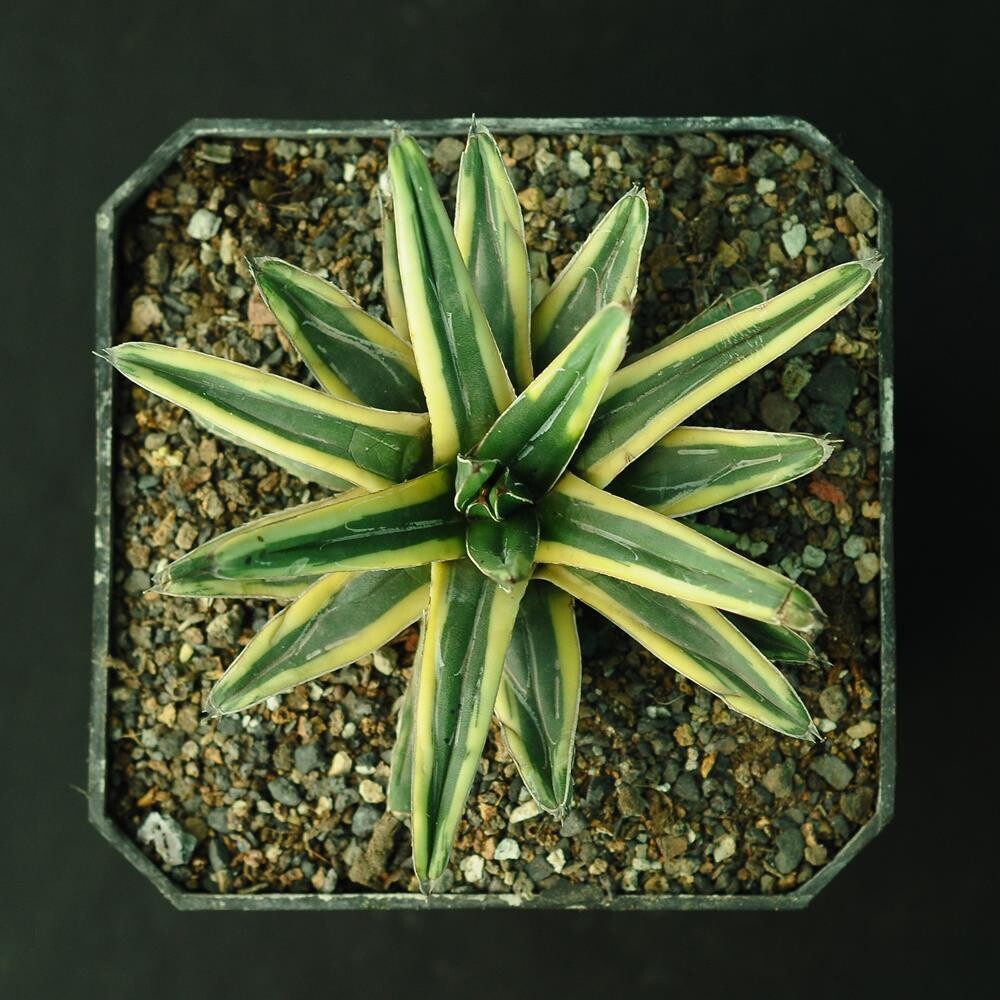Please check the Shipping Updates Page for information on shipping.
Agave victoria-reginae cv Thunder and Lightening
Origin of Name
Agave victoria-reginae cv 'Thunder and Lightning' is a cultivated variety of the Agave victoria-reginae species. The species name honors Queen Victoria, while the cultivar name 'Thunder and Lightning' imaginatively describes the striking variegation of the plant's leaves, reminiscent of a thunderstorm's dynamic contrast between dark and light.
Technical Description of Plant
'Thunder and Lightning' is a slow-growing, rosette-forming succulent. The plant is compact, reaching up to 12 inches in height and width when mature. Its striking feature is the variegated leaves: dark green with bright creamy-yellow to white margins and patterns, giving it a dramatic appearance. Each leaf is thick, smooth, and ends in a sharp terminal spine. The variegation patterns can vary significantly from plant to plant, making each specimen unique. It rarely blooms, but when it does, it produces a tall spike of attractive white flowers.
Origin of Plant
Agave victoria-reginae is native to the Chihuahuan Desert of Northeastern Mexico. The 'Thunder and Lightning' cultivar has been specifically bred for its unique variegation, making it highly prized among collectors. Its origin in desert environments informs its care and cultivation needs.
Conservation Status
While Agave victoria-reginae is listed as Near Threatened in the wild due to habitat loss and over-collection, the 'Thunder and Lightning' cultivar, being nursery propagated, does not impact the wild populations. Cultivation and propagation in nurseries play a crucial role in conserving this species by reducing the demand for wild-collected specimens.
Care Instructions
Agave 'Thunder and Lightning' prefers full sun to partial shade and requires well-draining soil. It's drought-tolerant once established but appreciates occasional watering during the dry season. Over-watering or poor drainage can lead to root rot. In winter, it is best to keep the plant dry and protect it from frost. Fertilizing is not necessary but can be done sparingly during the growing season. Handle with care due to its sharp spines
